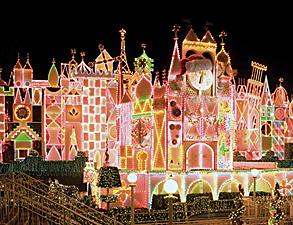More Americans Give Green Light to Energy-Saving Bulbs, But Are Dim About Urgency to Switch

DANVERS, MA — A new study by Osram
Sylvania found that while adoption of more energy efficient lighting
and awareness of advanced green lighting options are growing, Americans
are nevertheless largely in the dark about the need to switch from
traditional bulbs.
Results of the second annual Sylvania Socket Survey, which provides a
look at the attitudes, awareness and action in the U.S. regarding
lighting, were released today.
The survey found that 74 percent of respondents have switched to an
energy-saving light bulb in the past year, yet the majority (also almost
75 percent) were unaware of the phase-out of incandescent bulbs that's
to start in two years. The Energy Independence and Security Act of 2007
calls for a transition to more energy efficient lighting beginning with
100-watt traditional bulbs as of January 1, 2012.
 The
study also showed that costs remain a central issue for the majority of
respondents. They indicated that savings are a key factor for their
buying green bulbs, and that they are acutely and increasingly sensitive
to price with a focus on value.
The
study also showed that costs remain a central issue for the majority of
respondents. They indicated that savings are a key factor for their
buying green bulbs, and that they are acutely and increasingly sensitive
to price with a focus on value.
"The good news is there is a light at the end of the tunnel. But, the
challenge will be leading the way to the future of next-generation
lighting," Osram Sylvania President and CEO Rick Leaman said in a
statement releasing the study results.
"Consumers have made it clear that the difference between cost and value
is more important now than ever and the industry will need to respond
swiftly, even as we continue to innovate. 2010 will be a year of
education, not only for consumers, but also for commercial customers as
they begin to understand options offered by new-to-market energy
efficient lighting solutions."
Highlights from the study include:
- 66 percent of respondents said they are likely to purchase a compact fluorescent light (CFL), halogen or light-emitting diode (LED) bulb in the future.
- CFLs are used in 71 percent of the homes in America and are second to traditional bulbs in terms of use.
- Halogens are used in 40 percent of homes.
- 12 percent are using LED lighting.
- 52 percent said price is a key consideration in purchasing; the responses reflect a 12 percent spike compared to 2008.
- Just 13 percent said they plan to buy extra 100-watt bulbs before the phase-out.
- 16 percent say they will shift to lower wattage incandescent light bulbs.
- 91 percent said they consider energy consumption per bulb to be an important factor.
This year's survey was conducted during a three-day period in November
and involved more than 300 phone interviews with adults in the U.S.
 Increasingly
advanced lighting solutions are being used in prominent public venues.
Increasingly
advanced lighting solutions are being used in prominent public venues.
Earlier this week Osram Sylvania, a division of global technology firm
Siemens AG, announced that it is
sponsoring the "It's a Small World" attraction at Disneyland in Anaheim,
California, as part of a 12-year agreement between the Walt Disney
Company and Siemens.
The arrangement includes attraction sponsorships and promotion of
Siemens products and services at Walt Disney World Resort in Florida and
Disneyland Resort in California. Siemens maintains a
major sustainability practice through its
Building Technologies division; the Disney company also has
ambitious programs for
improving environmental responsibility.
The Sylvania Socket Survey follows the firm's release of its
lifecycle assessment of Osram LED lamps earlier this year. That
review concluded that the lamps achieve "a very high score for
environmental friendliness" and are a "genuine alternative to
incandescent lamps, even when considering the cumulative energy input
and environmental factors."
Images of "It's A Small World," LED lamps and flexible LED lighting
solutions courtesy of Osram Sylvania.